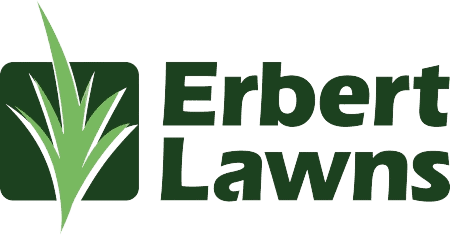
Mulching is more than a simple lawn care task; it’s a cornerstone of healthy, vibrant turf. At Erbert Lawns, we believe in nurturing lawns from the ground up. Proper mulching not only enhances your lawn’s appearance but also strengthens the grass, improves soil health, and promotes lasting vitality. With the right techniques, mulching transforms your lawn into a resilient, self-sustaining ecosystem.
Key Takeaways
- Mulching conserves moisture and reduces weeds.
- Different mulching methods suit different needs.
- Mulching improves soil nutrients and root development.
- Follow best practices to ensure healthy grass.
Benefits of Mulching for Grass Health
Mulching contributes far beyond surface aesthetics; it plays a critical role in nurturing healthy, resilient grass and maintaining soil balance. Below is a detailed insight into the importance of mulching.
-
Moisture Retention
Mulch creates a protective cover on the soil surface, helping to minimize moisture loss caused by evaporation. This helps retain moisture in the soil for extended periods, ensuring a consistent source of hydration reaches the grassroots. Especially during hot summer months or periods of drought, this consistent moisture availability helps the lawn maintain its lush appearance and reduces the need for frequent watering.
-
Weed Suppression
Weeds challenge grass for access to key resources such as nutrients, sunlight, and moisture, hindering healthy lawn growth. Applying mulch forms a protective layer that limits sunlight exposure to weed seeds, effectively reducing their ability to germinate and establish. This natural weed control method minimizes the need for chemical herbicides, allowing grass to grow stronger without unnecessary competition.
-
Soil Temperature Regulation
Fluctuating soil temperatures can stress grass roots, particularly during the heat of summer or the chill of winter. Mulch acts as a natural insulator, moderating soil temperatures by keeping the ground cooler in warm months and warmer during colder periods. This insulation helps protect the grassroots from extreme conditions, supporting consistent growth and health year-round.
-
Erosion Control
Heavy rains and strong winds can displace topsoil, leaving the grass roots exposed and vulnerable. Mulching adds a protective cover over the soil surface, helping to reduce erosion and maintain soil stability. This protection ensures that the lawn’s root systems remain well-anchored, preserving the integrity and structure of the lawn even in adverse weather conditions.
Methods for Mulching
Selecting the appropriate mulching method is essential to ensure that the lawn receives the maximum benefits from this practice. The method chosen can influence how nutrients are returned to the soil, how well moisture is retained, and how effectively weeds are suppressed. Here are three highly effective mulching techniques for maintaining a healthy, vibrant lawn:
Grasscycling
Grasscycling involves leaving grass clippings on the lawn after mowing, allowing them to decompose naturally and return essential nutrients to the soil. As these clippings break down, they release nitrogen, phosphorus, and potassium, enriching the soil and reducing the need for additional fertilisers. This practice not only supports a self-sustaining lawn ecosystem but also helps maintain consistent moisture levels by providing a light, organic cover over the soil. To ensure effective grasscycling, it’s important to mow regularly, keeping the mower blades sharp and adjusting the cutting height appropriately. Following the one-third rule never removing more than one-third of the grass blade at a time promotes healthy decomposition and prevents clumping. By adopting grasscycling, homeowners can contribute to a healthier lawn and a more sustainable environment.
Leaf Mulching
Leaf mulching consists of finely shredding fallen leaves and spreading them uniformly over the lawn surface. This technique creates a nutrient-rich layer that gradually decomposes, returning organic matter to the soil. Unlike traditional methods of raking and discarding leaves, leaf mulching recycles essential nutrients, improving soil health while significantly reducing the amount of waste sent to landfills. According to the EPA, this eco-friendly practice supports lawn vitality and promotes sustainable lawn care by lowering the carbon footprint linked to leaf disposal, contributing to more environmentally responsible landscaping.
Compost Mulching
Compost mulching entails applying a thin layer of well-decomposed organic compost across the lawn’s surface. This method introduces valuable organic matter into the soil, improving its structure, water retention, and nutrient content. Compost enhances microbial activity within the soil, encouraging the presence of beneficial organisms that aid in nutrient cycling. This method is particularly beneficial for lawns that require additional nourishment or have experienced soil degradation. Applying compost as mulch not only supports healthier grass growth but also enhances the soil’s ability to resist compaction and erosion.
How Mulching Affects Grass Health
Mulching extends far beyond the surface; it plays a crucial role in shaping the overall health and resilience of both grass and soil. By addressing nutrient availability, root strength, and soil integrity, mulching creates an environment where grass can thrive in the long term. Here’s a closer look at how mulching supports grass health at every level:
-
Boosts Soil Nutrients
As organic mulch decomposes, vital minerals like potassium, phosphate, and nitrogen are progressively returned to the soil. These nutrients are essential for maintaining vigorous grass growth, strengthening root systems, and supporting overall lawn vitality. This natural enrichment process reduces reliance on synthetic fertilizers, promoting a more balanced and sustainable soil ecosystem. Over time, soils treated with mulch become richer and better equipped to support long-lasting, healthy turf.
-
Encourages Deep Root Growth
Grass with deep, well-developed root systems is far more capable of withstanding environmental stress, including drought and temperature fluctuations. Mulch is essential for preserving steady soil moisture, which fosters the ideal environment for roots to spread out and grow downward. This deep rooting allows grass to tap into water and nutrients stored in the lower layers of soil, which significantly enhances drought tolerance and resilience. Lawns with strong root systems display better color, density, and durability throughout the year.
-
Reduces Soil Compaction
Compaction of the soil caused by heavy rain, frequent foot traffic, or lawn equipment use can limit oxygen and water delivery to the roots. A layer of mulch serves as a protective cushion that mitigates these pressures, preserving the soil’s natural structure. When soil compaction is minimized, it stays loose and well-aerated, enabling air, water, and nutrients to penetrate more efficiently to the grass roots. This ensures optimal root function and reduces the risk of puddling or runoff after rain.
-
Boosts Microbial Activity
Healthy soil is teeming with beneficial microorganisms that perform vital functions such as breaking down organic matter, cycling nutrients, and improving soil texture. Mulching introduces fresh organic material, which serves as a food source for these microorganisms, stimulating their activity. This, in turn, fosters enhanced soil structure and contributes to the development of a thriving soil ecosystem. A lawn supported by active microbial life will show stronger growth, improved nutrient availability, and greater resistance to stress factors.
-
Protects Against Disease
Maintaining stable soil conditions is one of the most effective ways to minimize the risk of common lawn diseases. By regulating soil moisture and temperature, mulch reduces the environmental stress that can make grass susceptible to fungal infections like brown patch, dollar spot, and other turf diseases. A healthier, less-stressed lawn is naturally more resistant to these issues, reducing the need for chemical treatments and promoting a more balanced, disease-resistant environment.
Best Practices for Mulching
To fully unlock the benefits of mulching while preventing potential issues, it is important to follow certain best practices. These guidelines ensure that mulch supports grass health effectively without creating unintended problems such as disease or suffocation of turf.
Maintain a Thin Mulch Layer—No More Than 1 Inch Thick
Applying mulch too thickly can smother grass blades and prevent them from receiving essential sunlight and airflow. A mulch layer that exceeds 1 inch traps excess moisture, which can lead to fungal growth and decay in the turf. By keeping the layer thin and even, mulch protects while allowing the grass to breathe and grow freely.
Opt for Organic Materials like Grass Clippings, Shredded Leaves, or Compost
For lawns, selecting organic mulch options is highly recommended. Materials such as grass clippings, finely shredded leaves, or compost decompose over time, enriching the soil with nutrients and improving its structure. In contrast, inorganic mulches like rubber or stone do not contribute to soil health and can interfere with natural processes. For instance, rubber mulch, while durable, does not decompose and may leach harmful substances into the soil, potentially affecting plant growth . Therefore, for a thriving lawn, it’s advisable to use organic mulches that support the ecosystem and promote sustainable landscaping practices.
Time Mulching for Spring and Fall to Align with Seasonal Lawn Needs
Mulching is most effective during spring and fall, the key transition periods for a seasonal lawn. In spring, it helps conserve moisture as temperatures increase and encourages healthy new growth. In autumn, mulching insulates the soil and roots, shielding them from early frost and preparing the lawn for the winter months.
Avoid Mulching When the Lawn Is Wet to Prevent Clumping and Disease
Mulching when the lawn is wet or soggy can cause the mulch materials to clump together, reducing airflow and creating an environment where fungal diseases thrive. Always wait until the lawn has dried sufficiently before applying mulch to ensure it spreads evenly and maintains its protective, breathable layer.
Conclusion
Mulching is a key element in maintaining a vibrant, healthy lawn. It strengthens your turf, enriches the soil, and protects against weeds and disease. Trust Erbert Lawns to deliver expert services that transform your lawn into a lush, thriving space. Ready to elevate your lawn care? Get in touch with us now, and we’ll assist you in creating the lawn of your dreams.
FAQs
What type of mulch is best for grass?
For lawns, organic mulch like grass clippings or crushed leaves works best. It decomposes naturally, enriching the soil.
How often should mulching be done?
Mulch every mowing session during the growing season or whenever leaves accumulate in autumn.
Can too much mulch harm grass?
Yes, layers over 1 inch thick can smother grass and create pest habitats.
Is mulching better than bagging clippings?
Restoring soil nutrients through grasscycling does reduce the need for synthetic fertilizers.
When would be the best time of year to mulch a lawn?
Spring and fall are the best times to prepare the lawn for seasonal changes.









